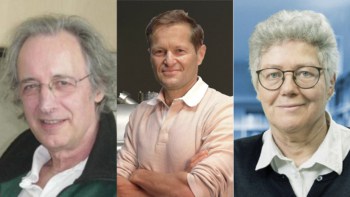The pioneering French physicist and Nobel laureate Pierre-Gilles de Gennes has died at the age of 74. De Gennes, who was awarded the Nobel Prize in Physics in 1991 for his ground-breaking work on liquid crystals and polymers, died last Friday in Orsay. Dubbed the "Isaac Newton of our time" by the Nobel-Prize committee, de Gennes also had an interest in many other fields of science and finished his career at the Institut Curie in Paris where he worked on cellular adhesion and brain function.

1932–2007
Born in Paris in 1932, de Gennes was home-schooled by his mother in Barcelonnette – a town in the Alpes-de-Haute-Provence region of France – because of frail health. He went on to graduate from the prestigious Ecole Normale Supérieure in Paris in 1955. After obtaining his doctorate in 1957, he began work as an engineer at the atomic energy commission (CEA) before becoming a professor in 1961 at the newly opened faculty of sciences at Orsay, near Paris, where he worked on superconductors and then liquid crystals – materials that have intermediate phases of matter between the solid and liquid phases.
De Gennes made several fundamental discoveries concerning the electromagnetic properties of liquid crystals, including how the orientation of their molecules can change when an electric field is applied. This research directly led to the development of a whole new industry, in which liquid crystals are used in displays for calculators, watches and flat-screen monitors. De Gennes’ book The Physics of Liquid Crystals, published in 1974, remains the definitive reference in the field.
In the 1980s, de Gennes turned his attention to long-chain polymer molecules, and in particular “superglues”, which are highly efficient adhesives that allow a variety of materials to be held together. One day, he said, such glues could be used to assemble aeroplanes without rivets.
In 1991, de Gennes was awarded the Nobel Prize in physics for having discovered that “methods developed for studying order phenomena in simple systems can be generalized to more complex forms of matter, in particular to liquid crystals and polymers.” He also worked hard in trying to interest young people in physics and visited over 200 schools after receiving the prize. In a tribute to de Gennes, France’s minister for higher education and research Valérie Pécresse said that he was the “perfect example of the teacher-scientist.”
De Gennes received many other awards during his lifetime, including the medaille d’Or from the national research council (CNRS) in 1980. He was a member of France’s Academy of Science and an honorary professor at the College de France.
• A full obituary of Pierre-Gilles de Gennes will appear in the July issue of Physics World.



